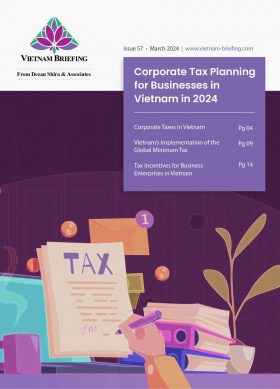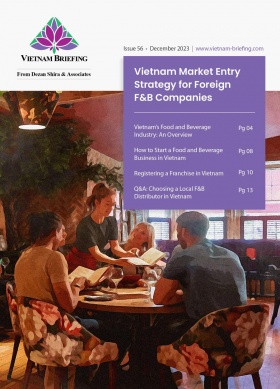Vietnam’s Packaging Industry: Investment Outlook
Vietnam’s packaging industry is booming, with a projected growth rate of 15-20 percent and over 14,000 active enterprises. Despite several emerging challenges, the sector is adapting through innovation and sustainability efforts. With favorable economic conditions and advantageous trade agreements, Vietnam’s packaging sector presents promising opportunities for growth and investment.
Vietnam’s packaging market is witnessing rapid expansion, fueled by increasing demand across various sectors, such as food, healthcare, chemicals, industrial, and agriculture. Both domestic and foreign businesses are heavily investing in this sector, fostering healthy competition and a diverse range of products in terms of quality and pricing.
Despite challenges such as rising competition and input costs, the industry is adapting through innovation and sustainability initiatives. With favorable conditions like economic development, rising consumer demand, and advantageous trade agreements, Vietnam’s packaging sector is poised for continued growth and offers a host of opportunities for investment and advancement.
In this article, we provide an industry overview, key driving factors, challenges, emerging trends, and investment opportunities in Vietnam’s thriving packaging market.
Industry overview
The packaging industry, expected to increase by 15-20 percent in the coming years, is one of the sectors showing the highest growth rate in Vietnam, experts said at a press conference on February 29 to introduce the ProPak Vietnam 2024.
According to the Vietnam Packaging Association, Vietnam accommodates roughly 14,000 enterprises in the packaging industry, with about 9,200 focusing on plastic packaging. Currently, there are over 900 packaging factories in Vietnam, with around 70 percent situated in the southern region, primarily in Ho Chi Minh City, Binh Duong, and Dong Nai.
In fact, the packaging industry, like many others, faces a series of challenges in the context of the global economic downturn. Industrial production has seen a slight decline, with the Industrial Production Index (IIP) dropping by 0.4 percent in the first eight months of 2023 compared to the previous year. Additionally, a survey by Vietnam Report found that 25.7 percent of packaging businesses experienced decreased revenue. Import-export turnover for packaging products also dropped to 63.1 percent of the previous year’s level in the first half of 2023.
However, experts surveyed by that report exhibit a more optimistic outlook, partly due to the gradual global economic recovery and disbursed funds. The survey also underscores the significant impact of government policies, consumer financial improvements, and strategic initiatives in driving positivity among packaging industry enterprises regarding future growth.
In its report on the Vietnam market, data consultancy Mordor Intelligence unveiled that the paper packaging sector is poised for robust growth, anticipating a compound annual growth rate (CAGR) of 9.73 percent between 2024 and 2029. Paper packaging is increasingly used across various industries, such as food, beverages, pharmaceuticals, and e-commerce.
Furthermore, other market surveys suggest that the Vietnamese metal packaging market is expected to register a CAGR of 3.81 percent during the same period. In addition, the plastic packaging market in Vietnam is anticipated to increase from 10.07 million tons in 2023 to 15.09 million tons in 2028, boasting an impressive CAGR of 8.44 percent. Plastic packaging for the food and beverage (F&B) industry retains a significant market share.
Growth drivers
Vietnam’s packaging industry is set for substantial growth, propelled by rapid economic and social progress, a surge in e-commerce, and beneficial free trade agreements (FTAs).
Economic and social development
Vietnam’s rapid economic and social development, especially the rise of the middle class and increasing per capita income, is significantly boosting the demand for packaged F&B products, personal care products, and pharmaceuticals, driving the need for packaging solutions.
E-commerce boom
The Vietnam e-commerce market size is estimated to be worth US$14.70 billion in 2024 by Mordor Intelligence, and is expected to reach US$23.77 billion by 2029, growing at a CAGR of 10.09 percent.
E-commerce platforms like Shopee, Lazada, and Tiki are witnessing a surge in online shopping, leading to a greater need for durable and aesthetically pleasing packaging that enhances customer experience and ensures product safety during transit.
Free trade agreements (FTAs)
Vietnam’s strategic signing of 18 bilateral and multilateral FTAs, including the EVFTA, CPTPP, and RCEP, is opening up new markets and reducing import tariffs for packaging products. Most import duties in these markets are set at nil percent, with only a few items subject to taxes and none exceeding 5 percent.
This favorable trade environment allows packaging enterprises to leverage these opportunities to expand their market share. Additionally, as supply chain issues ease and logistics costs decrease, Vietnam’s position in the global packaging market will be further strengthened.
Emerging challenges
Despite the favorable growth conditions, the packaging market in Vietnam faces several challenges:
- Fierce competition
The packaging market is experiencing rising competition from domestic and foreign businesses, spanning various product categories like paper, plastic, metal film, and PET plastic bottles. Notably, major brands such as Tan Tien Plastic and Rang Dong Plastic dominate the PET bottle segment, while Tetra Pak from Sweden and Combibloc from Germany lead in paper packaging for the dairy industry, owing to advanced technology requirements.
Specifically, concerning supplementary products like wadding foam, as some Vietnamese companies may currently favor sourcing from China due to the products’ improved quality, cost-effectiveness from bulk orders, and geographical proximity, foreign investors eyeing expansion in this sector should seriously consider establishing manufacturing units here. Vietnam offers diverse advantages, such as a skilled workforce, a favorable business environment, and a strategic location within Southeast Asia, making it an appealing investment destination despite prevailing sourcing preferences.
- Rising input material costs
A substantial portion of raw materials for packaging in Vietnam are imported, resulting in high and fluctuating input costs. This reliance on imported materials presents a challenge to maintaining cost-effective production. Companies are actively seeking solutions to mitigate these costs, including investing in local raw material production, implementing cost-saving technologies, and enhancing supply chain efficiency.
Key trends
Circular economy and sustainability
The shift towards sustainable packaging solutions and the circular economy is evident across three key stakeholders: businesses, consumers, and government.
A Vietnam survey revealed that 57.4 percent of consumers are willing to pay a premium for eco-friendly packaging, while 41.1 percent prioritize sustainability even at a higher cost. Furthermore, in line with legal regulations, the government enacted the 2020 Environmental Protection Law, mandating businesses to implement Extended Producer Responsibility (EPR) from 2024.
Particularly, businesses are increasingly adopting eco-friendly practices to meet the rising demand for sustainable products, focusing on reducing carbon footprints and improving packaging recyclability. Duy Tan Plastics Recycling factory, with its innovative “Bottle-to-Bottle” technology, leads this trend by recycling over 1.3 billion bottles domestically and exporting 4,200 tons internationally.
According to Marco Förster, ASEAN Director at Dezan Shira & Associates, Duy Tan’s success may prompt the emergence of more PET recycling facilities in Vietnam, driven by the financial potential and growing demand spurred by ESG initiatives. This also presents ample opportunities for foreign companies to enter Vietnam’s thriving market.
Premium and convenient products
The demand for premium packaging that combines high aesthetics with convenience is rising, particularly in the F&B sector. Companies are focusing on improving product quality and packaging design to cater to this trend. For instance, features such as resealable pouches, easy-open lids, and attractive graphics are being incorporated to enhance consumer appeal and functionality.
Technological advancements
Vietnamese businesses are embracing technological advancements to elevate the quality of their packaging, ensuring compliance with rigorous food hygiene and safety standards. This strategic investment is pivotal for maintaining competitiveness and aligning with international benchmarks for quality.
By implementing digital transformation strategies, packaging businesses are effectively optimizing their operations, enhancing efficiency, and bolstering their competitive edge in the market. Leveraging cutting-edge technologies like automation, AI, and the Internet of Things (IoT), these firms are revolutionizing production processes, reducing waste, and improving supply chain management. Moreover, the adoption of digital printing and smart packaging solutions is gaining momentum, offering new ways to engage with consumers and provide real-time information about products.
Impact of FTAs
FTAs such as the EVFTA, CPTPP, and RCEP are reducing import tariffs, thereby enhancing the global competitiveness of Vietnam’s packaging industry and providing new growth opportunities. These agreements are also encouraging the adoption of international standards and best practices, improving the overall quality and safety of Vietnamese packaging products.
Conclusion
The packaging market in Vietnam is poised for continued rapid growth, driven by economic development, rising consumer demand, and favorable trade agreements. While challenges such as competition and input costs persist, the industry is adapting through technological innovation, sustainability initiatives, and digital transformation.
With ongoing investment and government support, Vietnam’s packaging sector is set to thrive, offering diverse and high-quality solutions to meet the needs of various industries.
About Us
Vietnam Briefing is published by Asia Briefing, a subsidiary of Dezan Shira & Associates. We produce material for foreign investors throughout Asia, including ASEAN, China, and India. For editorial matters, contact us here and for a complimentary subscription to our products, please click here. For assistance with investments into Vietnam, please contact us at vietnam@dezshira.com or visit us at www.dezshira.com.
Dezan Shira & Associates assists foreign investors throughout Asia from offices across the world, including in Hanoi, Ho Chi Minh City, and Da Nang. We also maintain offices or have alliance partners assisting foreign investors in China, Hong Kong SAR, Dubai (UAE), Indonesia, Singapore, Philippines, Malaysia, Thailand, Bangladesh, Italy, Germany, the United States, and Australia.
- Previous Article The Laboratory Market in Vietnam: Current Trends and Future Prospects
- Next Article Aussichten für den vietnamesischen Food & Beverage-Markt








